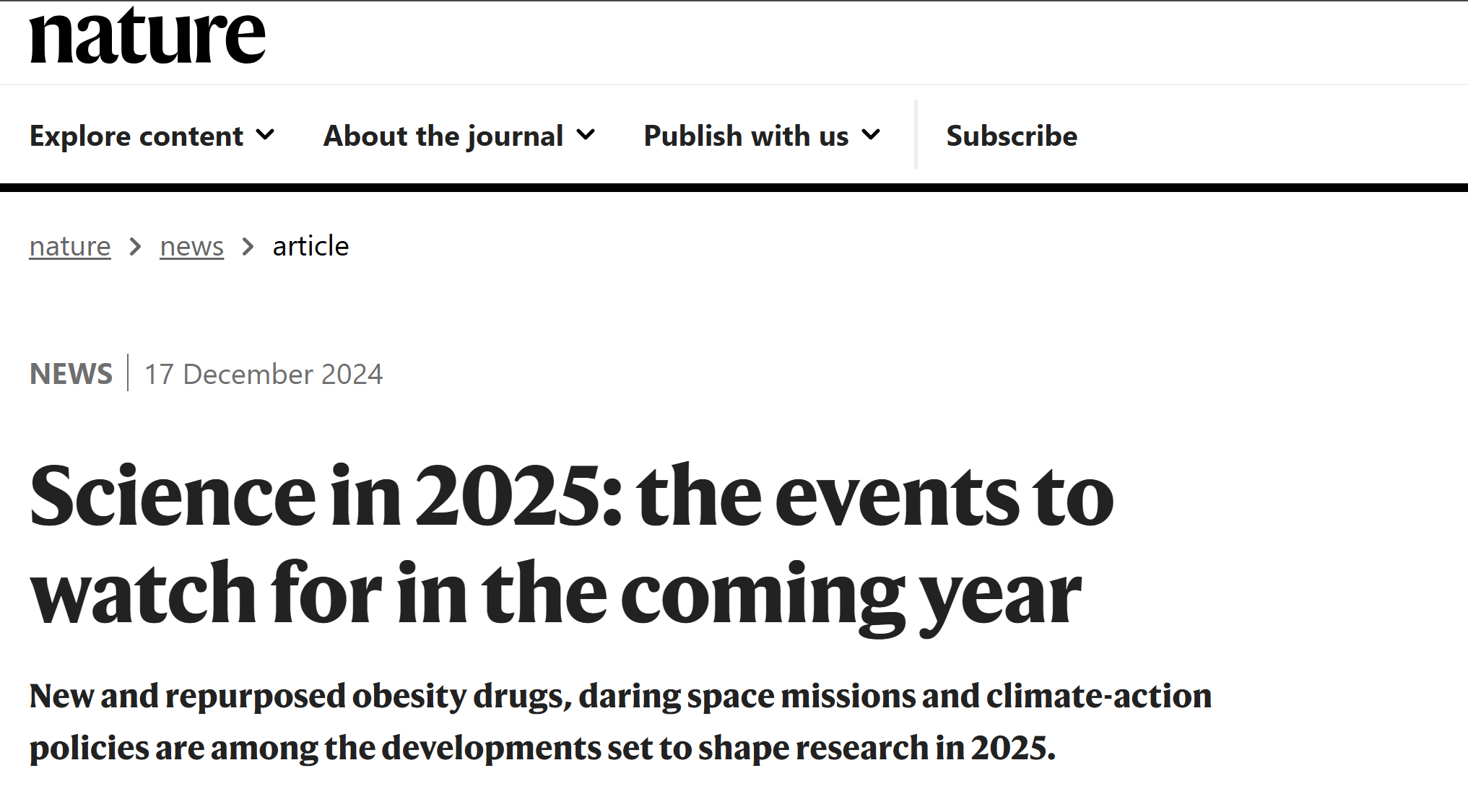Brain–computer interfaces (BCIs) enable direct communication between the brain and computers by recording and interpreting neural signals. These technologies hold transformative potential, helping patients with neurological conditions such as ALS, spinal-cord injuries, and epilepsy, while paving the way for brain-machine integration to expand human cognitive capabilities.

On December 17, the renowned UK-based journal Nature published its article, "Science in 2025: The Events to Watch For in the Coming Year," highlighting key scientific developments anticipated in 2025. Among the featured advancements were BCIs, pandemic prevention, drug development, space exploration, and climate change mitigation. Notably, the article spotlighted NEO (Neural Electronic Opportunity), a wireless and minimally invasive BCI technology developed by a team led by Professor Hong Bo at Tsinghua Medicine.
NEO represents a cutting-edge innovation in BCI, designed to assist paralyzed individuals in regaining motor function. The device is minimally invasive, with electrodes placed on the brain’s sensorimotor cortex. Clinical trials for NEO commenced in 2023 at Xuanwu Hospital, yielding remarkable outcomes. The first trial participant, paralyzed for 14 years due to a complete cervical spinal-cord injury, underwent NEO implantation at Xuanwu Hospital. Two coin-sized processors were embedded in the participant’s skull to capture neural signals from the sensorimotor cortex. After three months of at-home rehabilitation using the BCI, the participant achieved brain-controlled functionality, such as independently drinking water, with a grasping accuracy rate exceeding 90%. Furthermore, clinical metrics, including ASIA scores and sensory-evoked potential responses, showed significant improvement.
Unlike Elon Musk’s Neuralink, which uses invasive implants, NEO places electrodes epidurally, avoiding damage to neural tissue. Developed through extensive animal trials, NEO employs near-field wireless power and signal transmission, eliminating the need for an internal battery.
The BCI research team at Tsinghua University’s School of Biomedical Engineering has long been at the forefront of BCI innovation, exploring principles, algorithms, and clinical applications. In 2015, Professors Gao Xiaorong and Gao Shangkai achieved a record-breaking information transmission rate of 319 bits per minute using steady-state visual evoked potentials in scalp EEG-based BCIs. In 2021, Professor Hong Bo’s team set a new standard in preclinical studies of wireless minimally invasive BCIs, achieving an equivalent information transmission rate of 20 bits per minute per electrode, surpassing global benchmarks at the time.
In 2025, the NEO team plans to scale up trials to larger populations, further solidifying China’s leadership in BCI technology. These advancements demonstrate the transformative potential of NEO, offering hope for patients with severe neurological impairments while establishing new frontiers in human-machine integration.
